Zeiss Smart Optics: Discreet Smart Glasses
by Joshua Ho on January 8, 2016 7:00 AM EST- Posted in
- Wearables
- Trade Shows
- CES 2016
- Zeiss
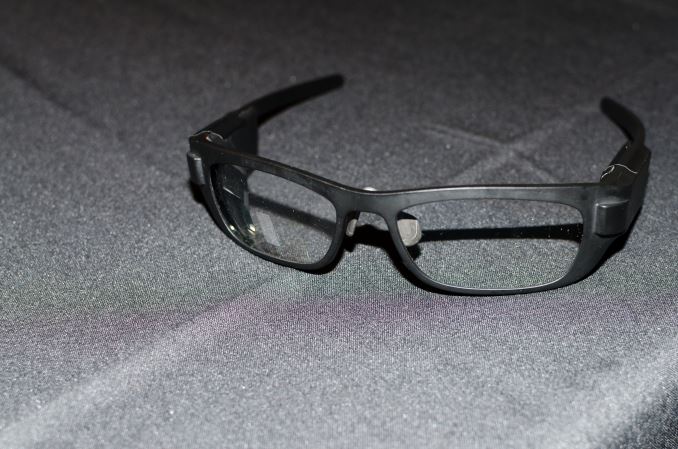
With Google Glass, one of the major barriers to adoption was just how glaringly obvious it was that you were wearing Google Glass. The display was a field sequential color LCoS with a simple projection system to make the display visible at a short distance away from the eye. Unfortunately, the problem with this system was that the display was completely obvious and wasn’t really integrated into traditional thin lens glasses. It was also pretty obvious when the display was active, as you could see light coming out of the LCoS array without getting uncomfortably close to the person wearing Glass.
Some of the other systems I’ve seen for projecting a display for smart glasses have also been pretty obvious to spot such as any of ODG’s smart glasses, although those aren’t really designed to be subtle in any way as they try to pack a full tablet of hardware into something head-worn. Sony’s SmartEyeGlass gets closer to something subtle, but it’s still glaringly obvious that you’re wearing something odd.
Zeiss identified this as an issue, and in response they created an internal team to try and make an optical system that resolves all of these issues. Their solution is what they’re now calling Smart Optics. This optical system takes a display mounted at the edge of the lens and can project it directly into the eye at an arbitrary position on the lens, with an arbitrary focus to either place the displayed image a short distance away from the eye (~2m), or even at infinity to create a true HUD.
In essence, this optical system relies upon total internal reflection and a Fresnel structure to transmit the light from the display through the lens into the eye. A complex prism design reflects the light from the display at the edge of the display into the lens, where the Fresnel structure then reflects the light in the lens out into the eye. The Fresnel structure is index-matched with the lens itself, which makes it almost invisible to the eye unless you have the right lighting to highlight the structure.
The entire design is made from injection-molded polycarbonate, which means that it’s capable of being mass-produced in a method similar to most current glasses. Based on discussions with those that worked on this project, the prism in particular was especially difficult to create as its shape is complex and voids and other defects would appear in the polycarbonate as it cooled. Zeiss also emphasized that their design was covered with over 250 patents to drive home the difficulty of making this optical system work.
Zeiss showed off an early prototype, which even at this stage was impressive as there was no visible translucency that could occlude vision and the projection worked flawlessly. Unfortunately, as the design is supposed to be made with a prescription for those that need one I couldn’t quite get the full experience as the corrective lenses that they had for the prototype weren’t quite strong enough for my eyes, but their rapid prototyping rig worked well and showed acceptable resolution and luminance.
I wasn’t really able to get much in the way of details regarding whether any devices with this optical system were imminent, but it sounds like Zeiss is working with partners that can put their optics to use. Based upon a lot of the discussions I’ve had with various people working with wearables it sounded like smart glasses were at least 5-10 years out, but with technologies like this I wouldn’t be too surprised to know that by the 7nm node that smart glasses using this technology will start to reach mass consumer adoption.


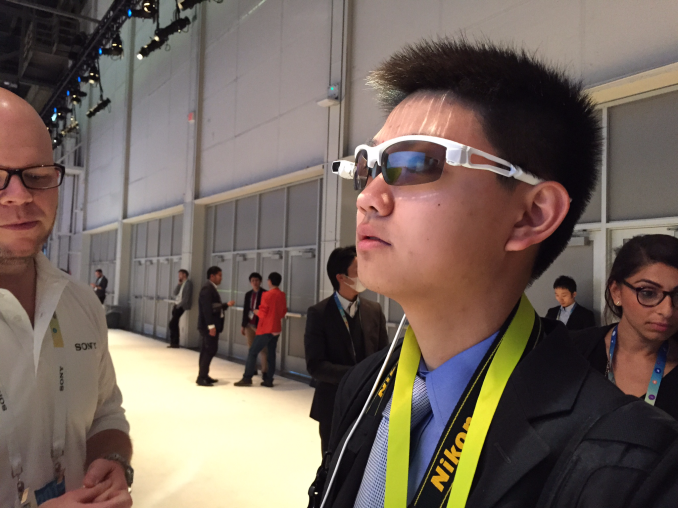

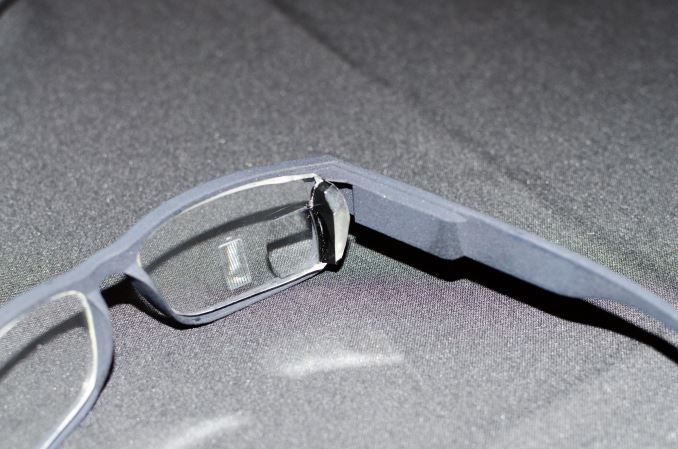
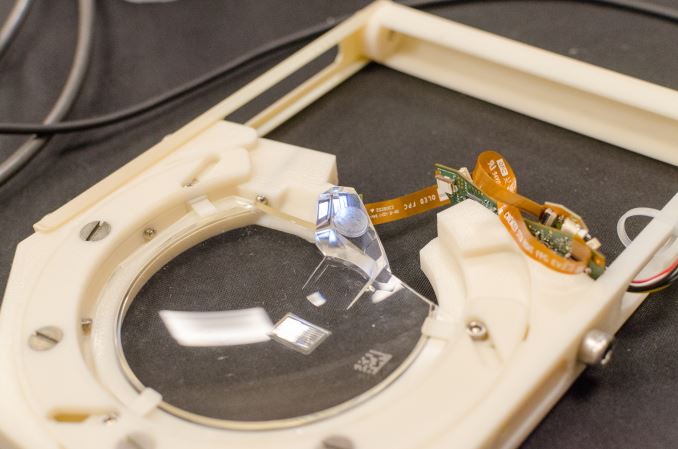
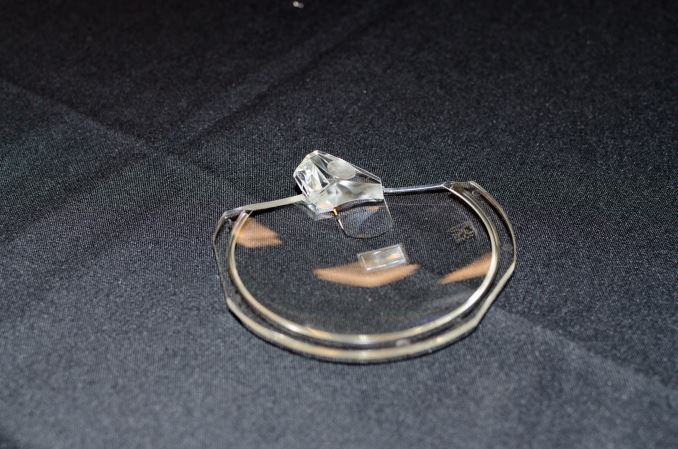
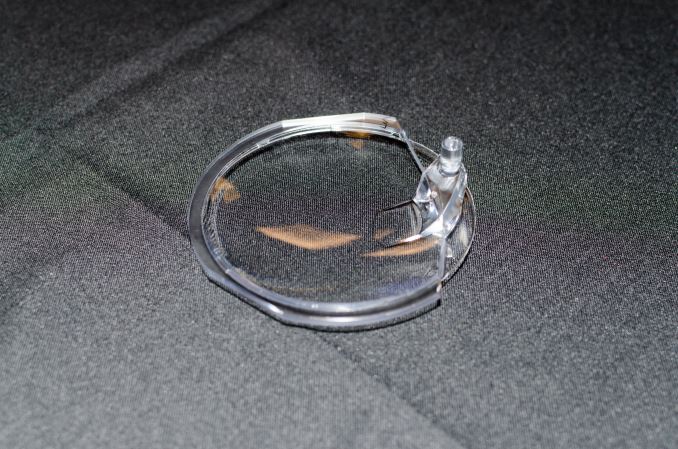








18 Comments
View All Comments
Murloc - Friday, January 8, 2016 - link
nothing stops people from turning on the recording in the bathroom and putting the phone in their jacket pocket and recording what you say.You probably shouldn't tell stuff you don't want known to people you don't trust.
The planned parenthood fetus body parts thing wasn't done with google glass.
limitedaccess - Friday, January 8, 2016 - link
Which why I'm wondering if there are any products sans the camera?Aimed as a content consumption device.
SleepyFE - Saturday, January 9, 2016 - link
I think they are real glasses. Joshua said they didn't correct his vision enough.wumpus - Friday, January 8, 2016 - link
How did we get to the point where you can build such a project without reading Snowcrash? Gargoyles are rude by definition. The hatred that glassholes receive is not just by looking stupid (although that was a good part of the hatred of gargoyles) but by actively finishing off all remaining privacy by putting what little of public life that is hoped to be off-line into computers (and furiously indexed and mined by google and other glass-makers) and probably facebook.Stealth glass isn't better, it's far worse. It just means that those spied on are much more justified in damaging the glasses and glassholes when they realize they have been spied on without knowing it. Ask the former East Germans how they would feel if they suddenly found out who the STASI informers were (because that's essentially what the glassholes *are*, although that really applies for NSA employees and contractors).
Impulses - Friday, January 8, 2016 - link
Spied on... In a presumably public space? Are you actually condoning beating up people wearing cameras? Just trying to figure out what degree of lunacy we're dealing with here...Murloc - Friday, January 8, 2016 - link
so what about CCTV and people taking selfies, and party photographers taking pictures?If you want to do private stuff in public, you better get out of urban areas.
Besides, in low-tech villages people talking are always the most effective, not cameras.
FunBunny2 - Friday, January 8, 2016 - link
chill out. Henri Cartier-Bresson ( https://en.wikipedia.org/wiki/Henri_Cartier-Bresso... ) not the first or last, but most well known, street photographer. when he did most of his most well known work in the 1940s and 1950s, no one complained. only the self-absorbed of today make a fuss.edzieba - Saturday, January 9, 2016 - link
The use of Polycarbonate and the explicit mention that Infinite Focus is possible are both excellent pieces of news for integrating a HUD into a motorcycle helmet visor. Having view-through access to speed/gear and basic symbolic lane/exit guidance would be a huge safety advantage over having to glance down at instruments.